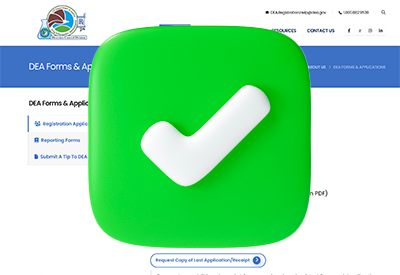Home » Pain Treatment Update: The Opiates and NSAIDs
Pain Treatment Update: The Opiates and NSAIDs
July 1, 2004
From The Carlat Psychiatry Report
Daniel Carlat, MD
Dr. Carlat has disclosed that he has no significant relationships with or financial interests in any commercial companies pertaining to this educational activity.
Here's a fairly typical scenario: An elderly woman comes to you as a referral from her PCP for the treatment of depression and anxiety. She hands you a well-worn 3-by-5 card with her meds listed in shaky handwriting. The list is long, and pain meds make up a good portion: "Vioxx, 12.5 mg QD; baby aspirin 81 mg QD; Prilosec, 20 mg QD; Percocet, 1-2 twice a day; Imitrex, 1 pill a day as needed for migraines."
This purpose of this article is not to teach you how to prescribe conventional pain medications (most psychiatrists are happy to leave that job to PCPs), but rather, to help you decipher and understand what your patient is taking, and why.
How Pain Works
Nociceptors are neurons found throughout the body that are activated by tissue damage. When tissue damage occurs, a now-famous enzyme called cyclooxygenase-2 (Cox-2) converts arachidonic acid to prostaglandins, which, in turn, do the dirty work of telling the nerve endings that it's time to start hurting. Right on cue, an inrush of calcium occurs, leading to the sodium influx and progressive depolarization that axons are so famous for. This signal gallops to the back of the spinal cord (the dorsal horns), where the neurotransmitter Substance P takes the baton and facilitates neurotransmission right to the very center of things, the thalamus, which is in charge of receiving pain signals and deciding what to do with them. Luckily, our brains do not accept pain passively. From both the frontal cortex and the hypothalamus, signals cause the release of several pain-busting chemicals, including the endogenous opiates beta-endorphin and enkephalin, which do battle with Substance P in the dorsal horn. Of course, exogenously administered opiates can do us this same favor. Of even more relevance to psychiatrists is the fact that both norepinephrine and serotonin are released from the brain and descend the spinal cord in order to dampen the pain response. This may explain the analgesic effects of tricyclics and dual reuptake antidepressants (although this is controversial-- see this month’s Q & A for a dissenting view).
NSAIDS (Nonsteroidal Antiinflammatories)
So named because they decrease inflammation without being in the prednisone family, NSAIDs include an everexpanding list of moderately effective pain meds. They are divided into two categories: conventional NSAIDs and Cox-2 inhibitors, or "coxibs."
Conventional NSAIDs work by inhibiting both isoforms of the Cox enzyme--Cox-1 and Cox-2. Disabling Cox-2 is a good thing, since it reduces pain-producing prostaglandin (PG) levels, but inhibiting Cox-1 is bad, because this slows the production of the good type of PG that protects the stomach lining. This leads to the GI distress that NSAIDs are famous for. Conventional NSAIDs include aspirin, ibuprofen (available as a generic as well as marketed as Motrin, Advil, and other brands), and a slew of me-too NSAIDs that are listed here mainly to help you recognize what type of medications many of your patients are taking: naproxen (available in generic form, as well as Anaprox, Naprosyn, Aleve, and other brands), Indocin (indomethacin), Voltaren (diclofenac), Clinoril (sulindac), Lodine XL (etodolac), and Relafen (namubetone).
The Cox-2 inhibitors first became available in 1998 and were quickly adopted because, by not inhibiting Cox-1, they don't produce the GI side effects of the NSAIDs. Cox-2 inhibitors include Celebrex (celecoxib), Vioxx (rofecoxib), and Bextra (valdecoxib). All three are approved for osteoarthritis, rheumatoid arthritis, and pain of menstrual cramps. In the battle for market share, Celebrex recently got a boost from a new study showing that patients on Vioxx have a higher risk of congestive heart failure than patients on Celebrex (Lancet 2004; 363:1751-56). On the other hand, Bextra, the newest entry in the Cox-2 field, is on the outs because it has caused several cases of Stevens-Johnson Syndrome since its approval.
You'll notice that many of your patients who are on conventional NSAIDs are also on one of the proton pump inhibitors, such as Prilosec (omeprazole), Prevacid (lansoprazole), or Nexium (esomeprazole)--because guidelines recommend adding a PPI to such agents for patients at risk for ulcers. By contrast, Cox-2 inhibitors probably don't increase the rate of ulcers at all.
Opiates
Opiates work primarily at the level of the dorsal horn of the spinal cord, by binding to opiate receptors and inhibiting the effects of Substance P. In a much earlier era, opiates were one of the major tools of psychiatry for dealing with agitation and depression, and still might be if they weren't so addictive. These days, few psychiatrists prescribe opiates, but given the array of formulations your patients are on, the following may be helpful.
It all begins with the opium poppy, from which the main alkaloid, morphine, was isolated in 1806. Heroin was synthetically derived from morphine in 1874; it is four times more potent than straight morphine. Methadone is a synthetic morphine with a similar potency to heroin, but can be taken orally and has a longer half-life than heroin.
In an outpatient practice, you won't see too many patients on morphine, because the oral versions, MS Contin (morphine sulfate) and Dilaudid (hydromorphone), have poor and unpredictable oral absorption. You'll also rarely see patients on Demerol (meperidine ); it is usually used by injection only for acute pain because it can cause death when combined with MAOIs.
You will see plenty of oxycodone, a synthetic opiate that is the active ingredient in Percocet (oxycodone plus acetaminophen) and Percodan (oxy plus aspirin). More recently, oxycodone has gotten packaged as a long-acting version called OxyContin, dosable twice a day and often diverted onto our city streets where it is known as "poor man's heroin." Hydrocodone (not to be confused with hydromorphone above) is usually packaged with acetaminophen to produce Vicodin; this has roughly the same potency as Percocet. Codeine (generic) is a weaker synthetic opioid, also usually combined with acetaminophen in Tylenol #4 (codeine, 60 mg and acetaminophen, 325 mg). Ultram (tramadol) is a narcotic that for a while was thought to be less addictive than other opiates, but this was largely wishful thinking. It both binds opiate receptors and mildly inhibits serotonin and NE reuptake, this last mechanism leading to concerns that it could cause serotonin syndrome if combined with SSRIs. It's dosed at 25-50 mg QID. A new formulation combined with acetaminophen is known as Ultracet.
TCR VERDICT: Cox-2s are hot; OxyContin, maybe too hot
General PsychiatryThis purpose of this article is not to teach you how to prescribe conventional pain medications (most psychiatrists are happy to leave that job to PCPs), but rather, to help you decipher and understand what your patient is taking, and why.
How Pain Works
Nociceptors are neurons found throughout the body that are activated by tissue damage. When tissue damage occurs, a now-famous enzyme called cyclooxygenase-2 (Cox-2) converts arachidonic acid to prostaglandins, which, in turn, do the dirty work of telling the nerve endings that it's time to start hurting. Right on cue, an inrush of calcium occurs, leading to the sodium influx and progressive depolarization that axons are so famous for. This signal gallops to the back of the spinal cord (the dorsal horns), where the neurotransmitter Substance P takes the baton and facilitates neurotransmission right to the very center of things, the thalamus, which is in charge of receiving pain signals and deciding what to do with them. Luckily, our brains do not accept pain passively. From both the frontal cortex and the hypothalamus, signals cause the release of several pain-busting chemicals, including the endogenous opiates beta-endorphin and enkephalin, which do battle with Substance P in the dorsal horn. Of course, exogenously administered opiates can do us this same favor. Of even more relevance to psychiatrists is the fact that both norepinephrine and serotonin are released from the brain and descend the spinal cord in order to dampen the pain response. This may explain the analgesic effects of tricyclics and dual reuptake antidepressants (although this is controversial-- see this month’s Q & A for a dissenting view).
NSAIDS (Nonsteroidal Antiinflammatories)
So named because they decrease inflammation without being in the prednisone family, NSAIDs include an everexpanding list of moderately effective pain meds. They are divided into two categories: conventional NSAIDs and Cox-2 inhibitors, or "coxibs."
Conventional NSAIDs work by inhibiting both isoforms of the Cox enzyme--Cox-1 and Cox-2. Disabling Cox-2 is a good thing, since it reduces pain-producing prostaglandin (PG) levels, but inhibiting Cox-1 is bad, because this slows the production of the good type of PG that protects the stomach lining. This leads to the GI distress that NSAIDs are famous for. Conventional NSAIDs include aspirin, ibuprofen (available as a generic as well as marketed as Motrin, Advil, and other brands), and a slew of me-too NSAIDs that are listed here mainly to help you recognize what type of medications many of your patients are taking: naproxen (available in generic form, as well as Anaprox, Naprosyn, Aleve, and other brands), Indocin (indomethacin), Voltaren (diclofenac), Clinoril (sulindac), Lodine XL (etodolac), and Relafen (namubetone).
The Cox-2 inhibitors first became available in 1998 and were quickly adopted because, by not inhibiting Cox-1, they don't produce the GI side effects of the NSAIDs. Cox-2 inhibitors include Celebrex (celecoxib), Vioxx (rofecoxib), and Bextra (valdecoxib). All three are approved for osteoarthritis, rheumatoid arthritis, and pain of menstrual cramps. In the battle for market share, Celebrex recently got a boost from a new study showing that patients on Vioxx have a higher risk of congestive heart failure than patients on Celebrex (Lancet 2004; 363:1751-56). On the other hand, Bextra, the newest entry in the Cox-2 field, is on the outs because it has caused several cases of Stevens-Johnson Syndrome since its approval.
You'll notice that many of your patients who are on conventional NSAIDs are also on one of the proton pump inhibitors, such as Prilosec (omeprazole), Prevacid (lansoprazole), or Nexium (esomeprazole)--because guidelines recommend adding a PPI to such agents for patients at risk for ulcers. By contrast, Cox-2 inhibitors probably don't increase the rate of ulcers at all.
Opiates
Opiates work primarily at the level of the dorsal horn of the spinal cord, by binding to opiate receptors and inhibiting the effects of Substance P. In a much earlier era, opiates were one of the major tools of psychiatry for dealing with agitation and depression, and still might be if they weren't so addictive. These days, few psychiatrists prescribe opiates, but given the array of formulations your patients are on, the following may be helpful.
It all begins with the opium poppy, from which the main alkaloid, morphine, was isolated in 1806. Heroin was synthetically derived from morphine in 1874; it is four times more potent than straight morphine. Methadone is a synthetic morphine with a similar potency to heroin, but can be taken orally and has a longer half-life than heroin.
In an outpatient practice, you won't see too many patients on morphine, because the oral versions, MS Contin (morphine sulfate) and Dilaudid (hydromorphone), have poor and unpredictable oral absorption. You'll also rarely see patients on Demerol (meperidine ); it is usually used by injection only for acute pain because it can cause death when combined with MAOIs.
You will see plenty of oxycodone, a synthetic opiate that is the active ingredient in Percocet (oxycodone plus acetaminophen) and Percodan (oxy plus aspirin). More recently, oxycodone has gotten packaged as a long-acting version called OxyContin, dosable twice a day and often diverted onto our city streets where it is known as "poor man's heroin." Hydrocodone (not to be confused with hydromorphone above) is usually packaged with acetaminophen to produce Vicodin; this has roughly the same potency as Percocet. Codeine (generic) is a weaker synthetic opioid, also usually combined with acetaminophen in Tylenol #4 (codeine, 60 mg and acetaminophen, 325 mg). Ultram (tramadol) is a narcotic that for a while was thought to be less addictive than other opiates, but this was largely wishful thinking. It both binds opiate receptors and mildly inhibits serotonin and NE reuptake, this last mechanism leading to concerns that it could cause serotonin syndrome if combined with SSRIs. It's dosed at 25-50 mg QID. A new formulation combined with acetaminophen is known as Ultracet.
TCR VERDICT: Cox-2s are hot; OxyContin, maybe too hot

Issue Date: July 1, 2004
Table Of Contents
Recommended
Newsletters
Please see our Terms and Conditions, Privacy Policy, Subscription Agreement, Use of Cookies, and Hardware/Software Requirements to view our website.
© 2025 Carlat Publishing, LLC and Affiliates, All Rights Reserved.


_-The-Breakthrough-Antipsychotic-That-Could-Change-Everything.jpg?1729528747)



